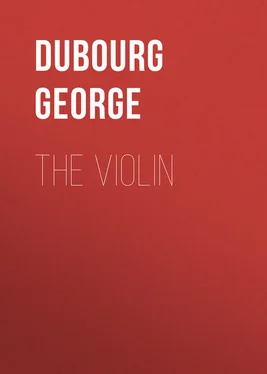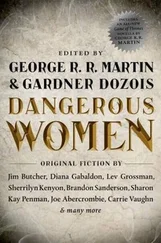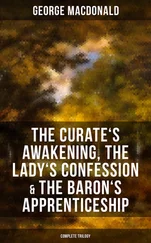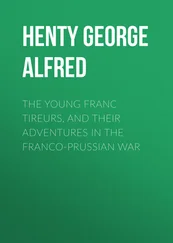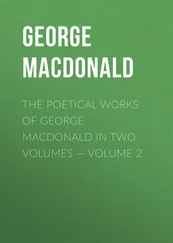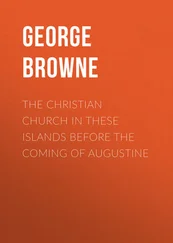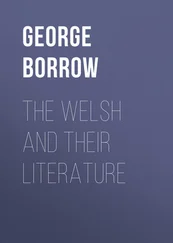George Dubourg - The Violin
Здесь есть возможность читать онлайн «George Dubourg - The Violin» — ознакомительный отрывок электронной книги совершенно бесплатно, а после прочтения отрывка купить полную версию. В некоторых случаях можно слушать аудио, скачать через торрент в формате fb2 и присутствует краткое содержание. Жанр: foreign_antique, foreign_prose, на английском языке. Описание произведения, (предисловие) а так же отзывы посетителей доступны на портале библиотеки ЛибКат.
- Название:The Violin
- Автор:
- Жанр:
- Год:неизвестен
- ISBN:нет данных
- Рейтинг книги:5 / 5. Голосов: 1
-
Избранное:Добавить в избранное
- Отзывы:
-
Ваша оценка:
- 100
- 1
- 2
- 3
- 4
- 5
The Violin: краткое содержание, описание и аннотация
Предлагаем к чтению аннотацию, описание, краткое содержание или предисловие (зависит от того, что написал сам автор книги «The Violin»). Если вы не нашли необходимую информацию о книге — напишите в комментариях, мы постараемся отыскать её.
The Violin — читать онлайн ознакомительный отрывок
Ниже представлен текст книги, разбитый по страницам. Система сохранения места последней прочитанной страницы, позволяет с удобством читать онлайн бесплатно книгу «The Violin», без необходимости каждый раз заново искать на чём Вы остановились. Поставьте закладку, и сможете в любой момент перейти на страницу, на которой закончили чтение.
Интервал:
Закладка:
In former days, we had the viol in,
’Ere the true instrument had come about:
But now we say, since this all ears doth win,
The violin hath put the viol out .
Thus, through a considerable tract of indefinite time, and a succession of definite changes, we reach the matured and accomplished instrument, the Violin proper ; and then, if we recur to the question, to whom does it belong? the answer becomes less difficult. It is to this instrument, this perfected production, that the Italians may, I think, exultingly point as their own; and, in doing so, they may well afford to be indifferent to all disputes about the title to those earlier apparitions, those crude and half-made-up resemblances to the fiddle, that were but as the abortions which, in human experience, sometimes precede a perfect birth. It is of sufficient notoriety that the earliest instruments of excellence , bearing the name of Violin, as well as the earliest players of eminence, were Italian. The Cremona fiddles of Hieronymus Amati (to go no farther back) were sent into this breathing world about two centuries and a half ago; and Baltazarini, the earliest great player of the genuine Violin on record, is known to have been imported as a curiosity from Italy, by Catherine de Medicis, in 1577. It is tolerably clear, too, that, as a court favourite, the Violin began its career in Italy – its progress, in that capacity, having been, as Burney observes, from Italy to France, and from France to England.
But the tie of Italian connection may be drawn more closely than this. Galilei, in his Dialogues (p. 147), states that both the Violin and the Violoncello were invented by the Italians; and he suggests more precisely the Neapolitans, as the rightful claimants of this honor. Dr. Burney, who does not attempt to settle the point, quotes the passage, to the above effect, from Galilei, and admits his own inability to confute it. Montaigne, whose travels brought him to Verona in 1580, has recorded, that there were Violins as well as organs there, to accompany the mass in the great Church. Corelli’s Violin, an instrument specially Italian, which afterwards passed into the possession of Giardini, was made in 1578, and its case was decorated by the master-hand of Annibale Caracci, probably several years after the instrument was finished; as Caracci at that date had numbered but eight of his own years.
Towards the end of the 16th century, the Violin is found indicated in some Italian scores, thus: — piccoli Violini alla Francese ; which circumstance has been sometimes alleged as rendering it probable, that the reduction of the old viol or viola to the present dimensions of the Violin took place in France , rather than in Italy: but the fact does not seem to offer a sufficient basis for the conjecture, when it is considered that no instruments of French construction, corresponding with the Violin in its present form, and of as early a date as those which can be produced of Italian make, are known to exist. It is reasonable to suppose, therefore, that these piccoli Violini , or little Violins, were not identical with the Violin proper; – although Mr. Hogarth 3 Footnote_3 “Memoirs of the Musical Drama.”
(from whose respectable authority I am rather loth to differ) quotes the phrase as one tending to the support of the French claim. The term in question, which occurs, particularly, in Monteverdi’s Opera of Orfeo , printed at Venice in 1615, seems to me to imply merely some French modification of the already invented Italian model – a modification applying to the size, and possibly also to some minor details in the form.
The French writer, Mersennus, who designates all instruments of the violin and viol class under the term barbiton , describes one of them, the least of the tribe, as the lesser barbiton . This latter was a small violin invented for the use of the dancing-masters of France, and of such form and dimensions as to be capable of being carried in a case or sheath in the pocket. It is the origin of the instrument which in England is called a Kit , and which is now made in the form of a violin. – Is it too great a stretch of conjecture, to hint, that this may, possibly, have been the kind of thing intended by the term above quoted?
That curious enquirer, Mr. Gardiner, in his “Music of Nature,” assigns to Italy the local origin of the Violin, but without placing the date as near to exactness as it might have been. He makes it to have been “about the year 1600.” He might safely have gone thirty or forty years farther back, at least, notwithstanding that the shape of the instrument, towards the end of the 16th century, has been supposed, by Hawkins, to have been rather vague and undetermined 4 Footnote_4 M. Baillot makes a somewhat longer draft upon the past tense; for he states, that for nearly three hundred years back there has been no change in the structure of the violin. – Introduction to the “Méthode de Violon du Conservatoire.”
. The transition from the old shapes to the new had occurred, though it was as yet far from universal. It is sufficient that the change had commenced.
Admitting the genuine and perfect violin to be rightfully assignable to the Italians, it may be of some interest, now, to present a few more records relating, principally, to the instrument in its imperfect character, when it bore only that sort of analogy to the true instrument, that the ‘satyr’ is said to have borne to ‘Hyperion.’
The “Musurgia, seu Praxis Musicæ,” of the Benedictine Monk Luscinius, published in 1542, represents (coarsely cut in wood) as the bowed instruments then in use, the rebec , or three-stringed violin, and the viol di gamba . The instruments of the viol tribe, however, which are supposed to have been those that led more immediately to the construction of the true violin, considerably precede the above period in their date of origin. Violars , or performers on the viol, whose business it was to accompany the Troubadours in their singing of the Provençal poetry 5 Footnote_5 They who enjoy the advantage of access to curious books may see a figure of a Provençal Fiddler in “Diez, Poesie der Troubadour.” Viol was the old Norman French name for the fiddle used by the minstrels of the middle ages, which was furnished variously with 3, 4, 5, or 6 strings. Viula was the Provençal term – and arson, or arçon, for the bow .
, were common in the 12th century; and, in a treatise on music, written by Jerome of Westphalia in the 13th century, there is particular mention made of the instrument known by the name of viol.
Under various modifications of the term fiddle , there are to be found many very early allusions to an instrument, such as it was, bearing some resemblance to the violin. Fidle is a Saxon word of considerable antiquity; and from the old Gothic are traced the derivations of
1. Middle High German. Videl (noun), Videlœre (noun personal), Videln (verb, to fiddle), Videl-boge (fiddle bow).
2. Icelandic. Fidla.
3. Danish. Fedel.
Then we have Vedel , Veel , Viool (Dutch); Vedel , Vedele (Flemish), Fiedel , Fidel , Geige (Modern German).
Fythele , Fithele , – and Fythelers (fiddlers) are alluded to in the Old English Romances. In the legendary life of St. Christopher, written about the year 1200, is this passage: —
…Cristofre hym served longe;
The Kynge loved melodye of fithele and of songe.
Интервал:
Закладка:
Похожие книги на «The Violin»
Представляем Вашему вниманию похожие книги на «The Violin» списком для выбора. Мы отобрали схожую по названию и смыслу литературу в надежде предоставить читателям больше вариантов отыскать новые, интересные, ещё непрочитанные произведения.
Обсуждение, отзывы о книге «The Violin» и просто собственные мнения читателей. Оставьте ваши комментарии, напишите, что Вы думаете о произведении, его смысле или главных героях. Укажите что конкретно понравилось, а что нет, и почему Вы так считаете.
